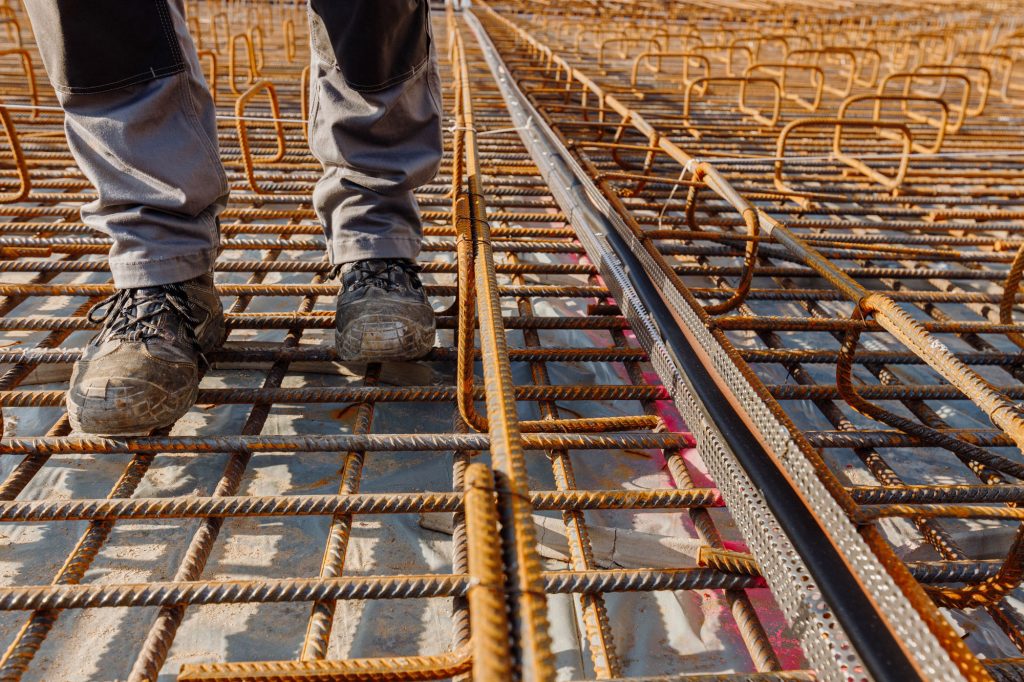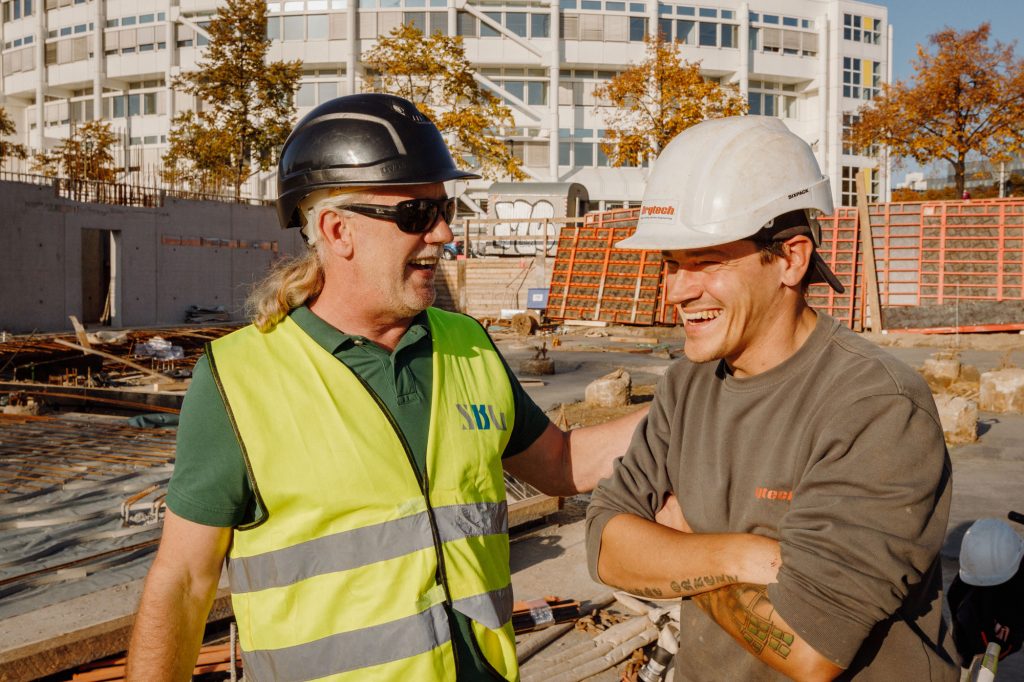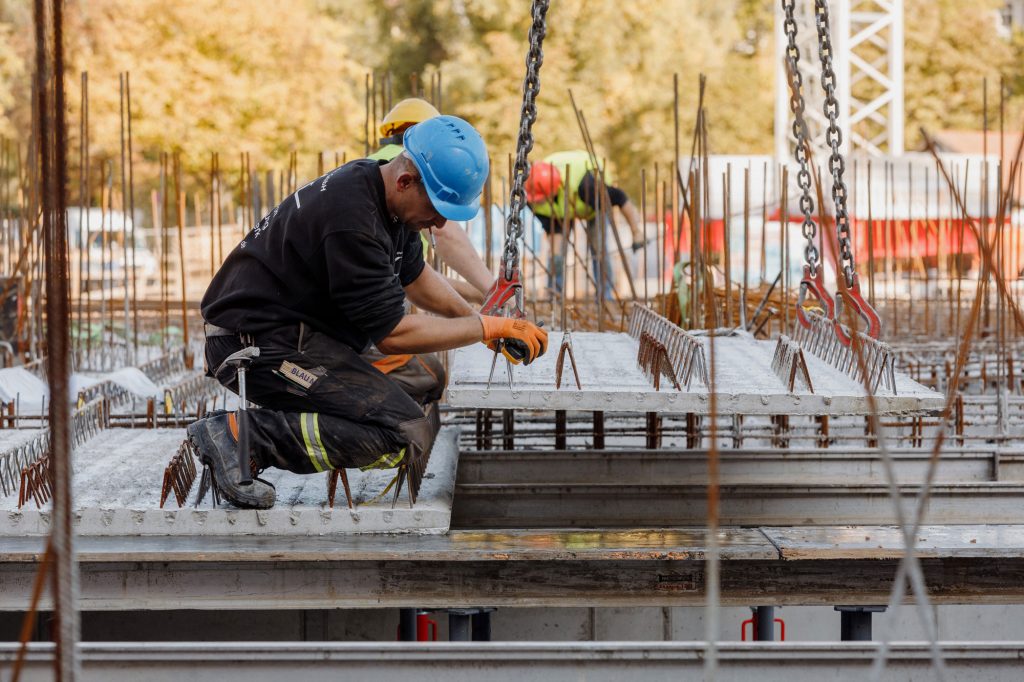What’s going on here. The construction site Charlottenbogen looks like the perfectly rehearsed choreography of a musical. Everything happens exactly at the right time at the right place with the right people. And the construction site also has its own special sound.
Here the surveyors, without them you can’t do anything. And the waterproofer, if it weren’t for him, the ground would simply crack later and water would penetrate. There the ceilings, which come fresh from the prefabrication plant by truck and are installed directly. And finally, the bricklayers, who raise one basement wall after the other. Everything happens at the same time, everything seems to be equally important – keeping track of everything on such a large construction site is not so easy. But that is precisely why everything has to be perfectly coordinated, like a carefully choreographed musical performed to the beat of hammering, tapping and sawing.

The surveyors:
The surveyors are still the quietest. Today the two men are here because they have to set the orientation points for the floor slab for the fourth and last house of the Charlottenbogen construction site. They drag their heavy measuring equipment into the construction site. But they are still disoriented themselves. “Where do we start?”, asks one of them and looks at the plan. “Wait a minute, there must be the axis system here somewhere,” says the other. All the important planning data are stored digitally in the measuring device, they just have to find the starting point. “I’ve got it”, shouts the first one again. Now they can get started, so that the construction workers know afterwards where the base plate should start and then stop again. Of course, they must not allow themselves the slightest inaccuracy.
The sealant:

There’s a foreman coming over. Robert Belsing is his name. 36 years old, tattoos on his forearms, square jaw. He’s the head of the waterproofing crew. It’s very important work, he says. Without their work, the floors could crack and water ingress. You do not want either. Both are to be ruled out a priori. “There is a waterproofing concept for this,” Belsing now explains. Simply explained: Ground water and earth movement press from below against the base plate, which must withstand enormous pressure. To prevent the slab from suddenly cracking in the process, it is provided with artificial predetermined cracks. These in turn are filled with a special gel so that no water can penetrate. This happens wherever holes, joints or these artificial cracks have contact with the ground. This is where the sealers use their various special sealants, usually with dual protection.
The masons:
In the past, whole columns, many men came, laying stone on stone. Nowadays you need two workers, a stone saw and a small wall crane. With the small crane they heave the large, heavy sandstones on top of each other, and in between they apply a two-component adhesive. Sometimes they must cut the stones to size. Then the stonecutter screeches, deafeningly. It divides the stone like butter. In this way, the walls of the individual inner cellar rooms are created one after the other.
The filigree ceilings:

At last the truck with the filigree ceilings is here. The workers are already waiting. Standing restlessly on the cellar walls of the first house. The big crane lifts over one piece of ceiling after the other. The workers direct the freight until it hovers exactly over the right spot, then they give the signal to lower it. Fits exactly. In this way, one piece of ceiling after the other is lifted over and anchored. The special thing: The slabs are precisely made to measure from a precast concrete factory. There, the exact data is obtained, these so-called filigree slabs with their different layers are cut to size and then delivered to the construction site in a precisely fitting manner. The only thing that remains to be done is to pour concrete on these ceilings and smooth them down. The basement ceilings are ready in no time.
Construction workers are not what they used to be either.
Many still know the picture of the construction worker who opens his beer at 10 o’clock in the morning. “But this construction worker no longer exists,” says Manuel Zarbock. He is the operations manager of the Charlottenbogen construction site. He is the one who is in charge here. Now he looks down on his construction site from above, on the men who are working in unison. “On the contrary,” he says, “if you look around the construction site, you see people doing a highly demanding job. Mathematics, geometry, physics, computing, spatial thinking.” All these are disciplines that these people must be able to do. And even the simplest worker bears responsibility – for his work and thus for the overall construction, for the safety of his colleagues. He must be able to understand and implement the plans, whether digital or analogue. That is why he must be up to date with the latest technology. Hard physical work it still is, of course. And maybe there will be a beer afterwards – for the end of the day!










